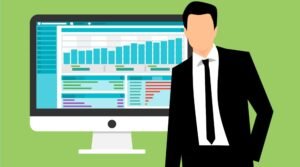Leveraging Data Visualization for Brand Growth

Using data visualization for brand growth helps teams see what works and what doesn’t faster. It turns raw numbers into clear visuals that support smarter decisions. Trends become easier to spot.
Campaigns become easier to adjust. Teams stay aligned, and strategies become sharper.
Explore how to use data visualization to drive brand growth in the points below. Read on.
Identify Patterns in Consumer Behavior
Knowing what customers like and when they buy helps shape marketing plans. With the right visual tools, patterns appear faster than they do in spreadsheets. Pie charts and line graphs can show time-based habits.
Heat maps can highlight popular products or times of day. This leads to smarter promotions and better inventory decisions. Teams can act quickly instead of guessing.
Spotting these trends early can make a big difference. It also helps predict future behaviors. That insight supports long-term brand growth.
Make Marketing Reports Clearer
Marketing teams often struggle with long reports full of numbers. Data visualization turns those reports into visuals that make sense right away. Executives and stakeholders don’t need to dig through pages to get answers.
One dashboard can show key performance indicators. Color-coded visuals help highlight strengths and weaknesses. It also keeps everyone focused on what matters most.
Consistent visuals make weekly or monthly check-ins more productive. Better understanding leads to quicker action. And that builds stronger marketing outcomes.
Track Campaign Results in Real Time
Real-time tracking shows what’s working and what’s not. Instead of waiting weeks, you get instant feedback. A live dashboard can show ad clicks, conversions, and social metrics. This allows teams to adjust while the campaign is still running.
Data visualization helps spot underperforming content quickly. It also reveals what’s gaining traction. A simple chart can show ROI clearly. This quick insight saves time and money. And it improves the outcome of future campaigns.
Compare Sales Performance by Region
Sales teams need to know where growth is coming from. Using visuals like maps and stacked bars makes it easy to compare regions. This helps adjust efforts to where they matter most.
Maybe one location is outperforming others, or one product sells better in a certain area. That kind of insight helps allocate resources wisely. It also guides local campaigns and pricing models.
Without visuals, those patterns might go unnoticed. Comparing sales side by side supports better decisions. And those decisions lead to better brand performance.
Highlight Wins During Presentations
Data visuals are powerful during meetings and pitches. They help you explain success without sounding vague. Instead of saying numbers increased, show it on a graph. Visuals make your results more credible.
A bar chart or line graph can highlight spikes in traffic or engagement. This builds trust with clients, teams, or investors.
It also supports your strategy with evidence. When data is visual and simple, people pay more attention. It’s a smart way to showcase your progress.
Support Team Alignment With Shared Dashboards
When everyone sees the same data, it’s easier to work together. Shared dashboards reduce miscommunication. Visualizing team metrics keeps everyone focused on the same goals. You can show Key Performance Indicators by department or project.
Charts and graphs make it easier to understand updates at a glance. No one needs to read through dense reports. This saves time and supports clarity. It also helps in planning future tasks. A visual approach builds a more connected team.
Simplify Product Performance Tracking
Every product launch has key metrics to watch. Instead of tracking these in spreadsheets, visuals make them easier to read. Bar graphs can show product popularity over time.
Line charts help track revenue per product. This makes it easier to decide what to improve or promote. Trends become clear when viewed visually. Visual tools help compare performance between versions or models.
Using a bar graph maker in minutes can provide instant clarity. That fast feedback loop supports better product decisions.
Strengthen Customer Retention Strategies
Customer retention is key to long-term success. Data visuals help understand where churn is happening. You can track retention rates over time and compare them across customer segments. That makes it easier to spot weak points.
Maybe new users leave early or repeat customers stop engaging. With visuals, these issues stand out fast. Teams can then adjust onboarding, support, or engagement plans. This builds stronger customer relationships. And loyal customers help grow your brand naturally.
Measure Content Effectiveness More Clearly
Not all content performs the same. Some posts get clicks while others fall flat. Data visualization helps separate the winners from the rest. Charts can show views, shares, and engagement over time.
You can sort content by type, length, or format. This insight helps in planning future topics. Visual tracking of content performance leads to smarter publishing. It also saves time and effort. When you focus on what works, results follow.
Improve Email Campaign Analysis
Email metrics can be overwhelming. Open rates, click-throughs, bounce rates they all matter. Visual dashboards help organize this data for quick checks. Line graphs show trends, while pie charts break down percentages.
You can spot what subject lines work and which lists perform best. This leads to more effective targeting. It also helps avoid waste and increase conversions. Using visuals keeps the process simple and actionable. That means better results with less effort.
Keep Stakeholders Updated Easily
Stakeholders don’t have time for long updates. Data visualization helps get to the point fast. You can show project status, progress bars, and forecasts in a single view. This keeps them informed and confident in your process.
Regular visual updates help avoid misalignment. It also builds trust over time. A clean dashboard shows you’re in control. And that kind of transparency helps your brand grow.
You Should Leverage Data Visualization for Brand Growth
Data visualization turns raw numbers into insight. It helps teams act faster, communicate better, and grow smarter. Whether you’re tracking sales, customer habits, or content results, visuals simplify the process.
They cut through confusion and support better decisions. With the right tools, any brand can unlock this advantage. Keep it clear, keep it simple, and keep it visual. That’s how to stay ahead in a fast-moving market.
Looking for other topics? We’ve probably covered them on the blog.







